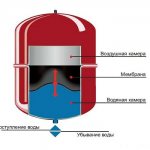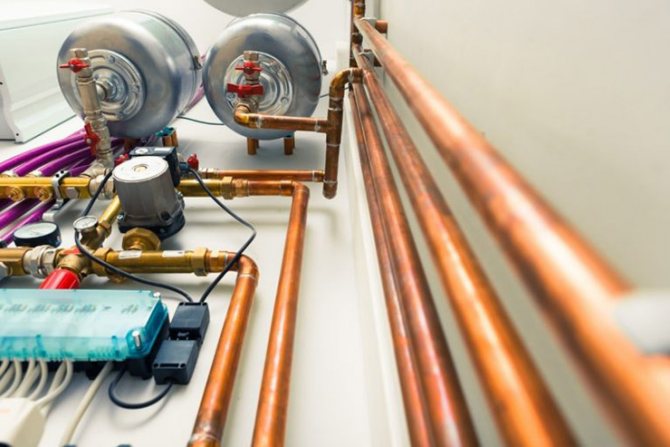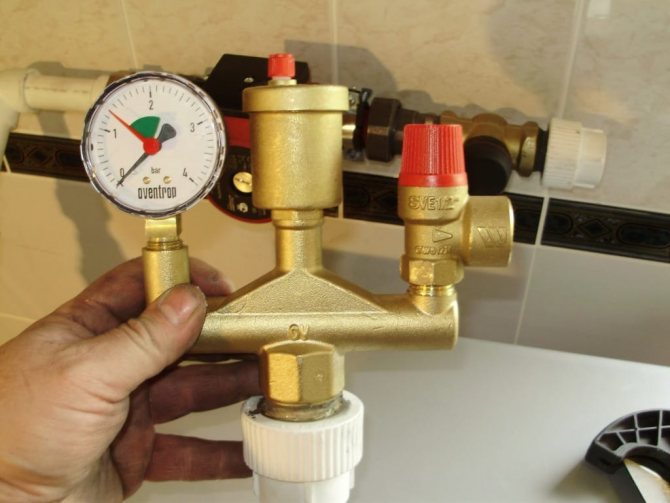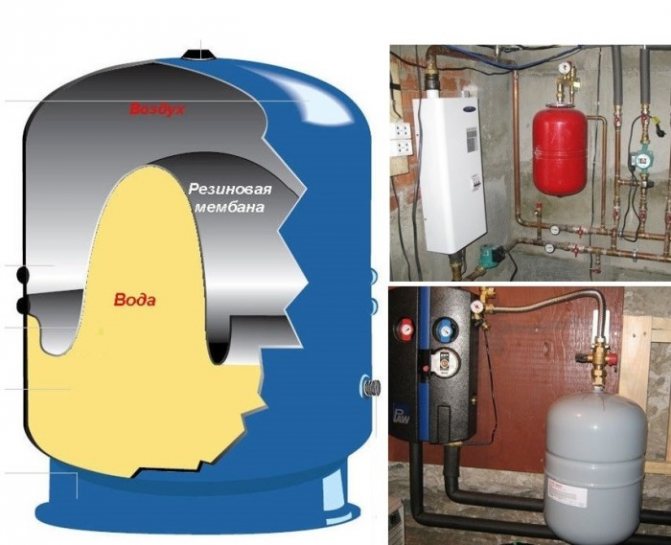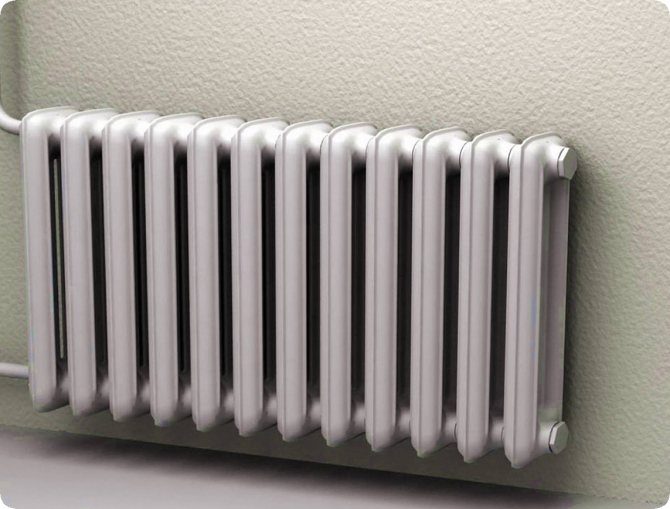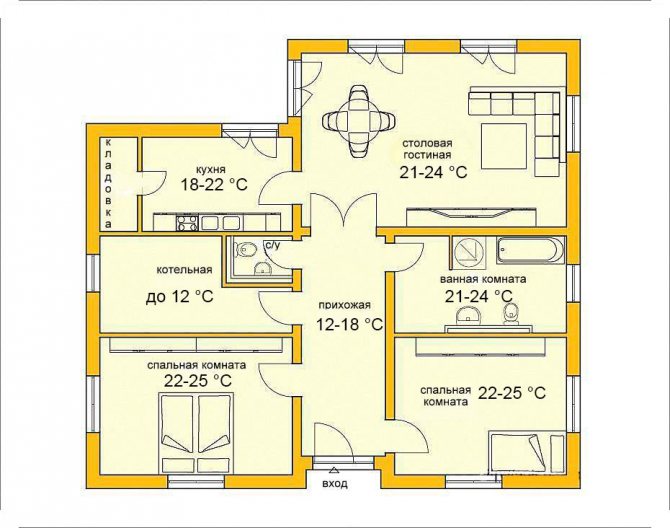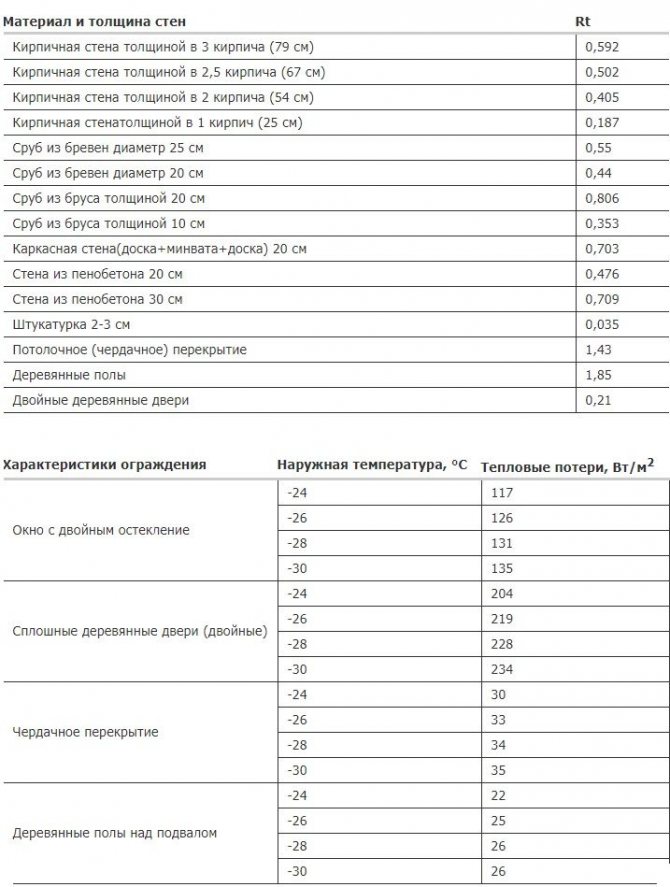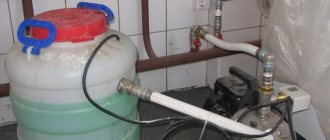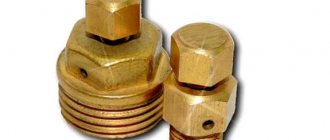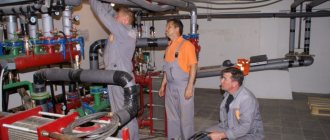Disadvantages of a closed heating system
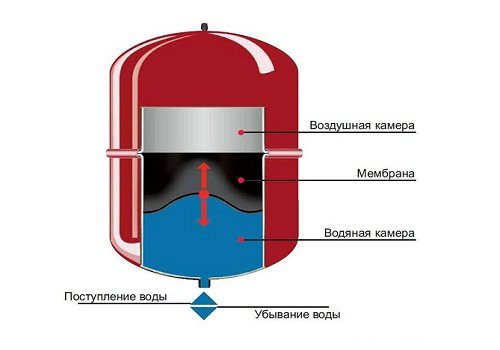
Diaphragm expansion tank
The disadvantage is the presence of a diaphragm expansion tank, which must have a large volume. A tank is selected with the expectation that its volume should be equal to 0.03 of the total volume of the heating system. The tank is filled only by 0.3-0.6 of the total volume, the remaining volume remains for a possible increase in the volume of the coolant. It should also be borne in mind that the larger the heating system, the less filling the expansion tank. The diaphragm expansion vessel in the heating system serves to maintain the pressure at certain values.
Another drawback is that the circulation of the coolant is forced, therefore, when the electricity is turned off, the operation of this system is not possible.
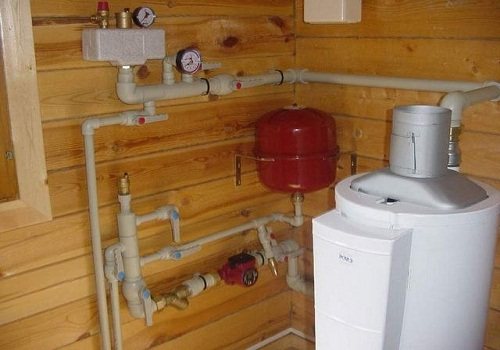

Closed heating system photo
House heating refurbishment | House heating Moscow, gas, water, autonomous
Refurbishment of heating in the house
Life makes its own changes in our existence. The factors influencing the need to replace the heating system can be very different. This could be:
- Increasing the area of the house by adding one or more rooms.
- Complete or partial redevelopment of the house.
- Breakdown of the boiler, pipelines, radiators, air ducts.
- Replacement or modernization of boiler equipment.
- Transfer of a boiler house from one energy source to another.
Whatever the reason, re-equipping a heating system is a complex and costly process. Before starting work, it is necessary to draw up a detailed plan for all work. Prepare all the materials necessary for a high-quality and quick replacement of all heating elements. Make sure pipes and radiators are in good condition. To choose the best option for heating a house, you need to know what heating systems are. Namely:
Each of these systems has a number of advantages and disadvantages. When planning the re-equipment of heating a house, you need to carefully consider all the options that you are going to use in the future.
Re-equipment of the boiler room
Having conceived to carry out the modernization of the old boiler house, it is necessary to consult in advance with the company that will be engaged in all the installation work in the future. If your old boiler is in working order and can work for a long time, and you need to replace it, just because the heated room has increased significantly in size, you need to sell it. This will save money on upgrades. Take into account the past experience of operating boiler equipment. If there are frequent interruptions in electricity or gas, consider installing a backup boiler for solid or liquid fuels. Having some experience in the operation of heating equipment, consult a specialist. They must consider all possible options. The consumer will only have to choose the most optimal option.
Replacement of pipelines and radiators
After completing the building, which already has a heating system. You need to think about how to build up the existing pipeline and how many radiators to add. It may be advisable to completely replace the entire wiring and install other radiators, more powerful, but in smaller quantities. When replacing radiators, do not forget to install temperature control systems on them, this will significantly reduce energy consumption.
Scheduling home heating retrofitting
If you think about increasing or simply modernizing heating systems, contact a company that provides service for your existing equipment. Engineers consultants will certainly offer the best reconstruction plan, taking into account the technical capabilities of the house. Indeed, when replacing the boiler room, it is quite possible that the ventilation system of technical rooms will have to be improved. When reworking heating, assess the need for these works and your financial capabilities. Plan your work carefully. In this case, the refurbishment will take place in a strictly allotted time with minimal financial losses.
How a closed heating system works
The heating agent is heated to the required temperature in the boiler. After that, due to the circulation pump, the coolant circulates through the system. When heated, the coolant expands and increases in volume, which leads to an increase in pressure in the heating system. All excess volume of the coolant enters the expansion tank, which regulates the pressure.
But the options are not excluded that the pressure range will be exceeded and, in order to avoid rupture of the radiator, a safety valve is installed through which, in a critical situation, the coolant will be discharged. The room is heated through a heating device through which the coolant circulates. The filter removes suspended matter and dirt from the system. Despite the fact that the system is closed, the possibility of air entering the coolant is not excluded, and air can also enter the system after flushing the heating system.
The automatic air valve does this very well. Also, to ensure the operation of the heating system, it is necessary to provide for feeding the network from the water supply, and if the pressure of the water supply is not enough, then it is necessary to install a make-up pump.
If you have any questions about a closed heating system, ask them in the comments, I will be happy to answer.
Choosing a heating system for efficiency and DIY installation
Thinking about the future system as a whole, you should first determine for yourself the main characteristic - the type of system. As a rule, we are talking in this case about the method of heating the coolant and, accordingly, its variety. This choice depends on the available conditions - climatic, economic and geological.
Heat pump
For example, ground source heat pumps are increasingly being chosen. They represent a "reverse freezer" in which heat is taken from the soil or groundwater. For this, wells are drilled or horizontal reservoirs are arranged. With the help of underground heat, refrigerant is condensed in a special heat exchanger and the heat carrier is heated.
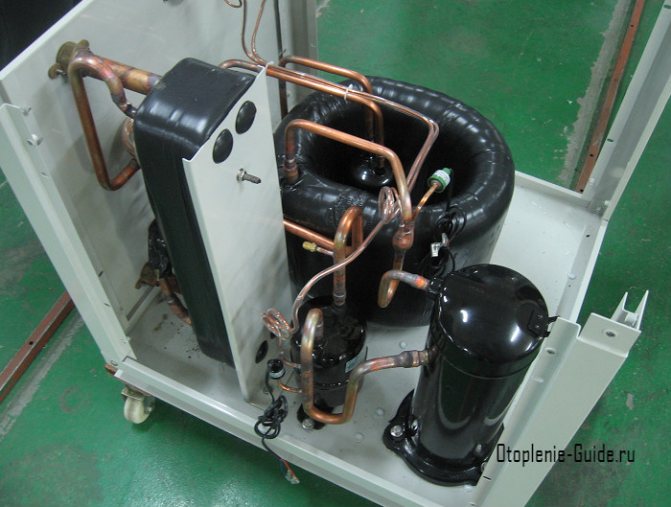

Exploded view of Chinese ground source heat pump.
Having paid once, in the future you will have to provide only system maintenance. And electricity consumption is minimal here. The electrical power of the heat pump for a living space of 120-150 sq. m, as a rule, does not exceed 2-3 kW. And at the same time it produces 10-12 kW of heat, if, of course, everything is correctly calculated and arranged. That is, heating a house during the year will cost only 15-20 thousand rubles, depending on various factors.
For comparison, an electric water boiler with the same heat loss parameters will "eat" 60-80 thousand rubles a year. However, upfront costs are often the deciding factor. Not everyone is ready to pay 200 - 400 thousand rubles. at the same time for a heating device based on a geothermal heat pump. In addition, the development and installation of such a heating system in a private house with your own hands is generally unlikely. Therefore, it is, for now, exotic. The device of an air heat pump, of course, is much simpler and cheaper, but its effectiveness is questionable. Especially in the northern regions.
Fuel boilers
Traditional heat sources are fuel and electricity. Electricity today is the most expensive way to heat a coolant, and gas is the cheapest. However, not everywhere. Somewhere connection to the gas main is impossible in principle, or it will cost the same half a million. Moreover, it should be borne in mind that, most likely, no fuel will become cheaper. And the option that now seems to be profitable may turn out to be the most costly in 15 years. Nevertheless, heating systems based on boilers are widespread in Russia:
- Gas, solid fuel or liquid fuel;
- Multi-fuel;
- Electrical.
In addition, several different boilers or models are often installed, whose design requires conversion to operate on a different fuel. For example, diesel heat generators are sometimes converted to gas and vice versa. Diversification in this case will allow you to adapt to changing living conditions.


Gas boiler pump disassembled.
The development and installation of heating systems based on fuel boilers with a liquid heat carrier is not very difficult. Many, especially "experienced", private homeowners make such a heating system in a private house with their own hands. However, to achieve the effect with minimal investment, accurate calculations of all the nuances are required. These include:
- Pipeline diagram - one-pipe "Leningrad", two-pipe, etc .;
- Material and diameter of the pipeline;
- Type of boiler, water heater, heat accumulator;
- Heating devices type;
- System control method;
- Emergency (backup) heating method.
Neglect of all the subtleties will reduce the energy efficiency of the system, and, accordingly, the feasibility of its device. If the "master" does not have the necessary skills at all, the independent implementation of such a project is almost impossible. At the very least, it will surely lead to unnecessary waste of money and time.
Electric heating
If we talk about the simplicity of the device, electric heating will, of course, become the champion. After all, it does not need a gas pipeline or a fuel storage. In addition, electric boilers are much safer in terms of fires and gas pollution in premises. In small houses, you can do without boilers altogether, heating the building, for example, with warm floors and walls. The thoughtful use of the heating cable will give a lot of advantages:
- Safety, because individual sections can be easily monitored for short circuit or overheating, and the presence of carbon monoxide is generally excluded.
- The simplicity of the device, due to the uselessness of a liquid heat carrier.
- The speed and ease of installation, explained by the unnecessary need for special knowledge or tools.
- Reliability provided by the ability to duplicate all circuits.
- Simplicity and efficiency of control carried out by thermostats.
It is difficult to talk about the efficiency of electric heating without knowing the heat loss of a particular building. But the availability of the simplest resistive cable is indisputable. As for reliability: in the absence of mechanical damage and avoiding overheating, the cable service life is measured in several tens of years. The same cannot be said about pipes.
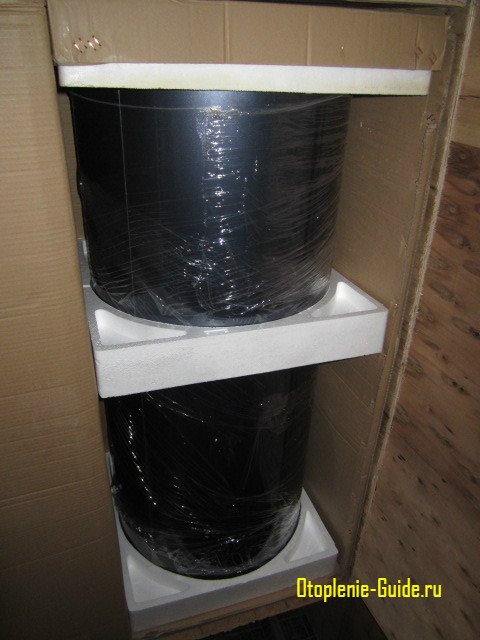

Buffer capacity (heat accumulator) PAWT-200LE2 in a package.
Therefore, despite the cost of electricity, electric heating is quite advisable. Especially in places where payment for electricity is made taking into account reduction factors. For example - in the absence of a nearby gas main or the location of the site in the 30-kilometer zone of the nuclear power plant. A frequent occurrence is "night" odds. Thanks to them, you can save money by heating heat accumulators at night and using the accumulated heat during the day. Even if there is no liquid heat carrier, a properly arranged concrete screed can work as a heat accumulator.
Considering all these points, we can say that for installing a heating system in a private house with your own hands, the easiest option is electric heating. Its efficiency is easily increased by high-quality thermal insulation of all enclosing structures and thoughtful control of contours. The presence of an autonomous electric generator, moreover, will provide heat in your home in the event of a power outage.
Preparatory stage:
- Obtaining an extract of the list of necessary materials from the specification, which is an integral part of the completed project for a new heating system or an old one being modernized (if the project is completed by our specialists, then this list is already available);
- Purchase and delivery of material to the object, as well as ensuring its safety;
- Dismantling of old equipment (if reconstruction or replacement of the old system is carried out);
- Layout of the routing of the supply and return pipes;
- Making holes in the walls, as well as channels of strobes (with hidden wiring of communications) for the smooth laying of pipes;
- Cleaning of premises from construction waste;
The purpose of this stage is to ensure uninterrupted, high-quality work of the further installation of the entire heating system of a private house.
